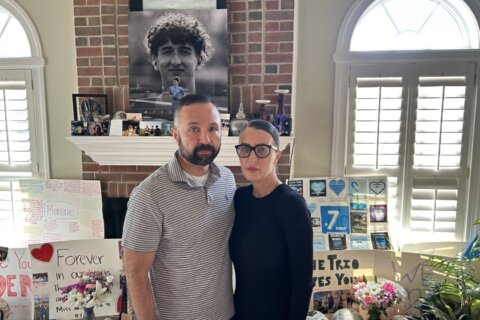Visions of a vibrant, walkable community near the West Falls Church Metro station have the support of Fairfax County Board of Supervisors, but some who live nearby are concerned new development will jeopardize their safety.
“We’re focusing on our transit stations and activity centers,” Supervisor John Foust, who represents the Dranesville District where the project will be built, told WTOP. “This is one of the existing transit stations that has not been developed to the level of what we could call ‘transit-oriented development.'”
The area to be developed includes three adjacent sites, near the intersection of Route 7 and Haycock Road: Land owned by Metro, the City of Falls Church and the adjoining Virginia Tech site.
Foust likens the future development to the Mosaic District, off U.S. Route 29, near the Merrifield neighborhood of Fairfax.
“The community will include mixed-use — residential, commercial, retail,” Foust said. “It will create an opportunity for people to get out of their vehicles, live next to the West Falls Church Metro, work at some of the sites nearby and create an environmentally friendly, vibrant living experience, where you can live, work and play in the same community.”
Not everyone loves the idea.
“That works perhaps for people who live right at the Metro, but there’s a lot of collateral damage for people who live farther away from the Metro,” said Paul Rothstein, an attorney who lives nearby.
He, and other residents in existing neighborhoods on the fringes of the planned development, are concerned about the effects of increased traffic.
“They walk out of their homes that were built in a suburban infrastructure, and they’re going into an increasingly urban level of traffic,” Rothstein told WTOP. “Those two are a recipe for disaster.”
Of particular concern for Rothstein is pedestrian safety, including for students walking to nearby Haycock Elementary School, along an Interstate 66 overpass.
“I would invite anyone to look at that overpass during the morning rush, when people are walking to that school,” Rothstein said. “It’s not safe — it’s basically a curb, as opposed to a sidewalk.”
Foust said the Board of Supervisors has and will continue to improve safety in surrounding neighborhoods.
“We’ve instituted an Active Transportation Study, that will look at the one-mile radius around the Metro for pedestrians, and a two-mile radius for bikes,” Foust said. “And we’ve set up an advisory committee of local residents that’s helping us identify the missing links, and the items that need to be addressed, from an infrastructure improvement standpoint.”
Rothstein, who was a member of an earlier task force, is seeking more data from the county on projections of how local traffic will be affected by the new development.
“We have to have an urban level of infrastructure and sidewalks, if we’re going to have an urban level of development and tax revenues,” said Rothstein.
Foust said he and the board will continue to look for short-and-long term safety improvements in existing neighborhoods.
“For instance, are there traffic calming options that we could implement in that area to address the safety concerns that have been raised,” Foust said.








